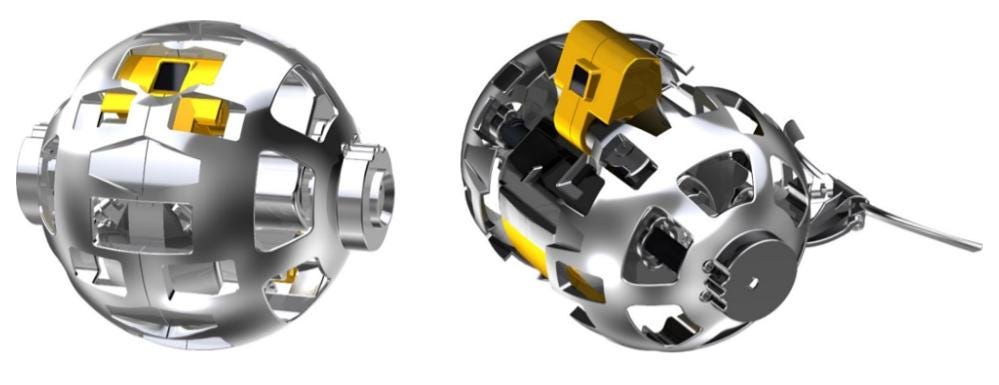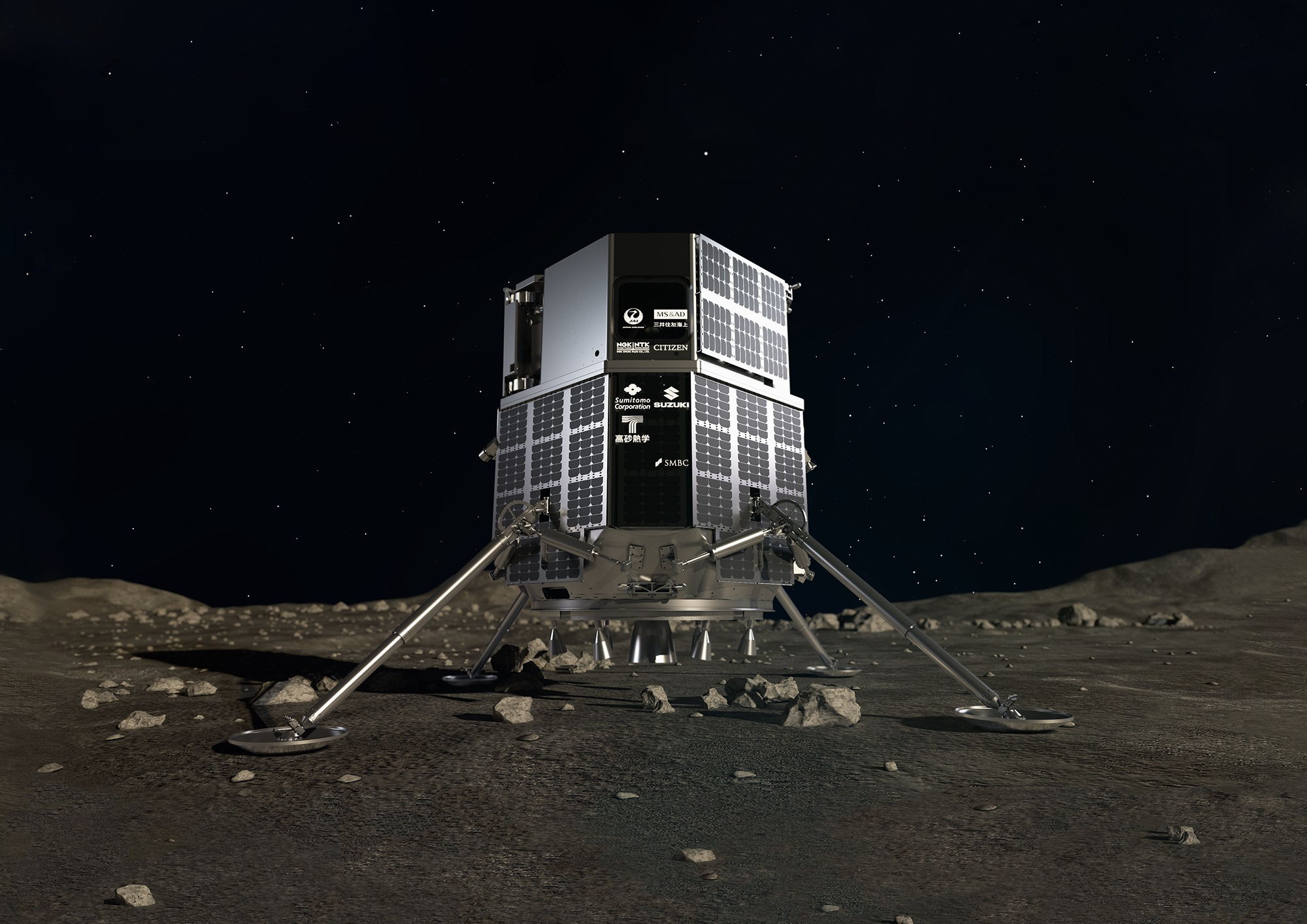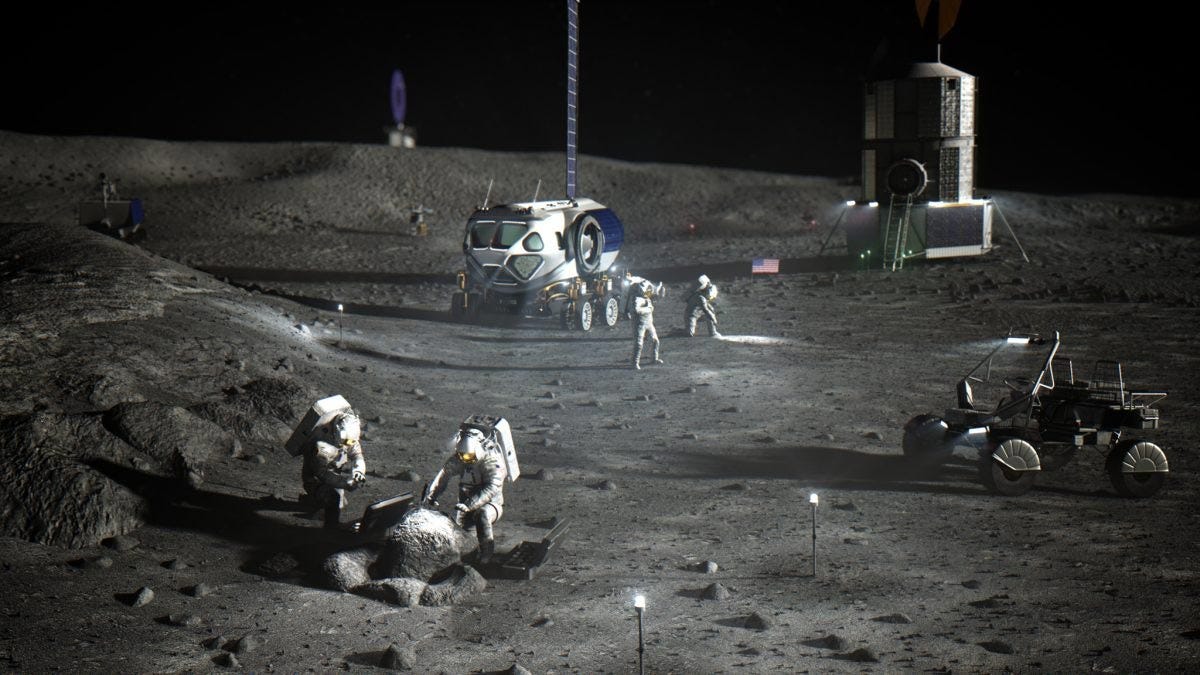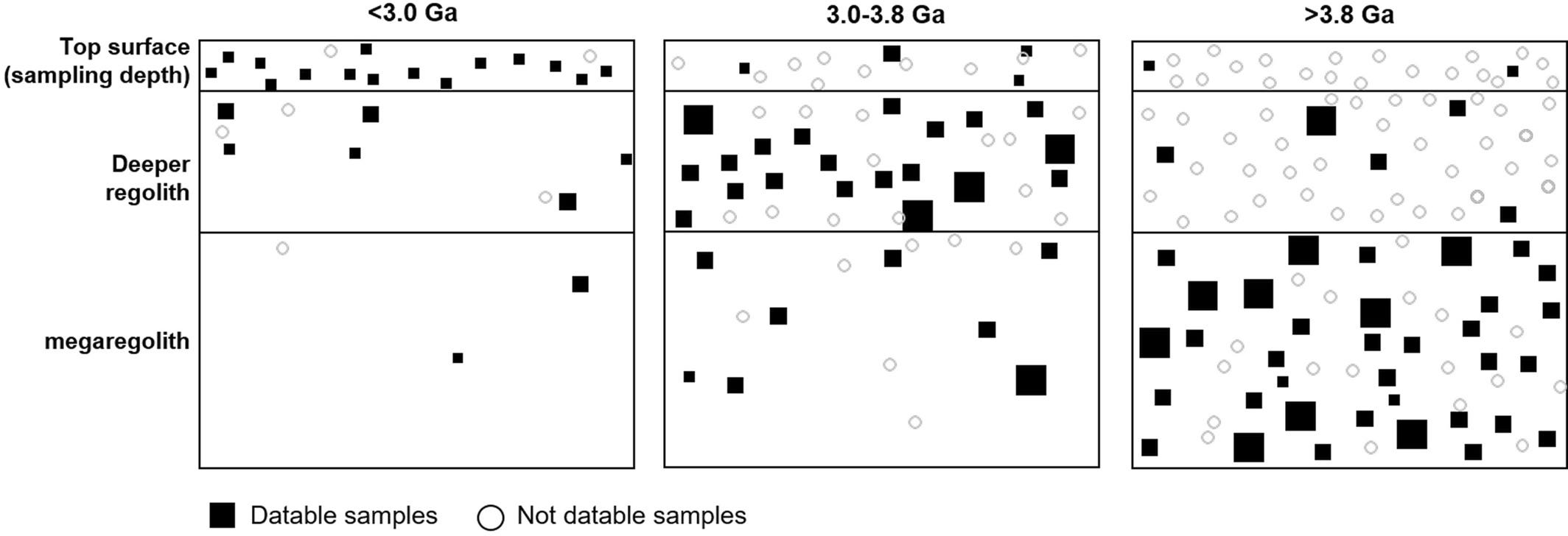Moon Monday Issue #29
ispace's 2022 Moon landing mission to carry international payloads, South Korea joins NASA Artemis, Canada to send a lunar rover by 2025, Theia's remains on Earth, and more lunar developments.
Last week there were major Moon developments from across the world, from Canada to Japan to the U.S. to South Korea to China and Russia. A perfect week for true lunatics. 🚀
Highlight
The Japanese lunar exploration company ispace inc. announced last week that their first Moon landing mission in 2022 will carry a JAXA-led tennis-ball-sized rover. After ispace’s spacecraft deploys the 250-gram spherical robot on the Moon’s surface, it will split into half to use its two hemispheres as wheels, and communicate to Earth via the lander. JAXA’s aim with the rover is to use information about the mechanics of the lunar soil to aid the design of an autonomous, crewed pressurized rover, currently being jointly researched by JAXA and Toyota.

ispace also announced 3 more payload deals, all funded by the Canadian Space Agency (CSA), and built by Mission Control Space Services Inc. (Mission Control), Canadensys Aerospace (Canadensys), and NGC Aerospace Ltd (NGC) respectively. These are being funded under CSA’s LEAP initiative, which aims to invest $150 million in Moon exploration over 5 years.
Mission Control will have a $3-million AI flight computer on the lander that will enable the UAE’s Rashid rover, also carried by ispace, to recognize geological features as it drives around the Moon. Canadensys has signed an MoU intending to have a set of cameras on the lander to capture 360-degree views of the mission’s descent, landing, post-landing views of the Moon’s surface, as well as payload deployments. NGC also has an MoU, to use one of the lander’s camera to test their planetary navigation system, which here would identify craters and lunar features during descent to help the lander autonomously determine its position and navigate accordingly. Per ispace, they’re close to finalizing the contracts with both Canadensys and NGC.

Notably, all of these four entities—JAXA and the three Canadian companies—chose ispace independently, and via an open bidding process. Furthermore, the deals with JAXA and NGC will initiate ispace’s lunar data business, wherein ispace will transfer several sets of mission telemetry and images to both organizations.
Exploration
On May 24, South Korea became the 10th nation to sign the Artemis Accords, which NASA calls “a practical set of principles to guide cooperation among nations participating in NASA’s 21st century lunar exploration plans.” NASA had already been collaborating with South Korea for years on the latter’s Korea Pathfinder Lunar Orbiter mission launching in August 2022. In March 2021, NASA tightened the collaboration by selecting 9 scientists to join the mission’s science team. Related: Some people in the space law and policy community are concerned that the Artemis Accords could have the opposite effect, and increase competition and rivalry in space.

Meanwhile, Russia and China have invited several international entities, including the European Space Agency, to join their International Scientific Lunar Station project, a long-term science base at the Moon’s south pole. They expect initial responses at the Global Space Exploration Conference (GLEX) to be held June 14-18 at St. Petersburg. Russia, where both countries will also present the project’s roadmap.
The U.S. President’s Budget Request for NASA's fiscal year 2022 proposes a modest 5% boost to human lunar exploration over the previous year. The NASA-led Gateway station goes up from $698 million in 2021 to $785 million, and the Human Landing System increases from $850 million to $1,195 million. This clearly indicates that despite ongoing protests, NASA is assuming going forward with a single award for developing the SpaceX Lunar Starship to land the first Artemis astronauts on the Moon, which the budget request still says would be in 2024. However, the U.S. Government Accountability Office released a report last week that warns that the Artemis program faces not just technical risks but also management issues, and raises serious doubts about the 2024 goal. The U.S. Congress must pass appropriations legislation in response to this budget request by September 30th, 2021, the end of the current fiscal year.
NASA is awarding $49 million over 5 years to Charles Stark Draper Laboratory Inc. to provide an advanced avionics software suite for guidance, navigation, and control of the agency's crewed Orion spacecraft. In more Orion news, NASA has awarded $17.8 million to Dynetics to develop and provide an air monitoring system for the Artemis III mission to land humans on the Moon. This sensor would build on the one provided by Dynetics for Artemis II to be more compact and power-efficient.
The Canadian Space Agency (CSA) is investing $2.5 million to send a rover to the Moon by 2025 in cooperation with NASA, who will provide one of the two science instruments onboard. Interestingly, CSA intends for the rover to survive the frigid lunar night. CSA will soon release a request for proposals for the rover, and will select two companies for initial design and development work before choosing one of them to build the rover. This development follow CSA’s previous investment of $4.4 million to advance technologies for small rovers and their science instruments.
Lockheed Martin is partnering with General Motors, who helped develop Apollo’s Lunar Roving Vehicle, to design a rover for NASA’s Artemis program. They’ll bid a rover design, currently in early stages, to NASA later this year when the space agency is expected to announce a follow-up of their industry input last year and have a competition for robotic and crewed rovers. Lockheed and General Motors want their next-generation rover to traverse significantly farther, be autonomous, handle rugged terrain at the Moon’s poles, and survive and “even operate” in the frigid lunar night. The rover would be able to preposition itself near a landing site prior to astronauts arriving, and conduct autonomous science operations. The companies anticipate research on this rover to advance electric vehicles here on Earth, too.

According to Roscosmos, the first mission of their nuclear-powered Zeus spacecraft will be in 2030. Zeus will first approach the Moon, where it will egress a lander, then head to Venus to deliver another spacecraft, and then head towards Jupiter and one of its satellites. If the mission indeed does happen anytime near the target date, it would quite amazing. This development follows a $57 million preliminary design contract by Roscosmos last December for the Nuklon spacecraft to test the technology by 2024.
Tangent: As countries and companies look to expand economic and scientific activities on the Moon, the advantages of nuclear energy will make its use inevitable. But its use on the Moon, in various forms, comes with several issues, open questions, and legal challenges. Here’s a comprehensive article on the Open Lunar Foundation about how existing national and international laws can address some open questions, and how we can advance the laws to tackle anticipated and new challenges.
Science
Scientists have a consensus that the Moon formed from the debris ejected of a proto-planet Theia slamming into the young Earth 4.5 billion years ago. Recently, scientists have proposed that the two continent-sized higher density regions in the Earth’s mantle, one beneath Africa and one beneath the Pacific Ocean, could be Theia’s remains.

As an expanded investment to the $2.9 million last year in lunar science instruments, part of the LEAP initiative, CSA will support scientists in Canadian institutes to develop research programs around key planetary science questions, and ways to geophysically characterize the Moon’s subsurface.
As we return humans to the Moon again, the planetary science community continues to discuss and suggest best sampling strategies. A recent paper argues based on extensive impact modeling that the Moon’s numerous small impact craters garden its surface to the point that they severely damage the fidelity of older materials down to several meters below the surface. To successfully bring back greater volumes of older material in future missions, the authors suggest to sample material from ejecta blankets of young, large craters—larger than 100 meters on highlands and 10 kilometers in mare areas—that have excavated material from deep below when they formed, a strategy proven successful during Apollo but can now be more efficient.

More Moon
A nice story of how a new Moon dust detector developed for use in future lunar habitats is already being used on Earth, in 15 states across the U.S for various applications ranging from monitoring forest-fire emissions to civil areas to things in the oil and gas industry.
Everyone, I’m publishing this one-of-a-kind Moon exploration newsletter for free, with no ads. And it will stay that way. If you like my work, support me to keep it going and growing.
